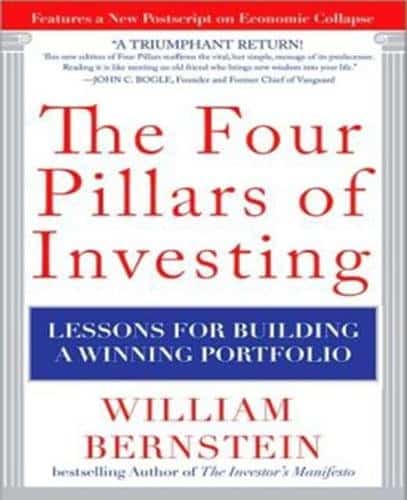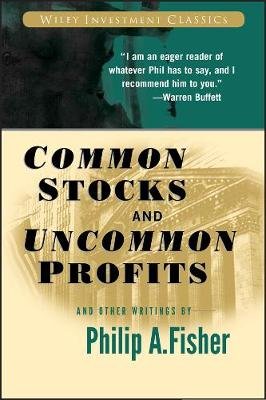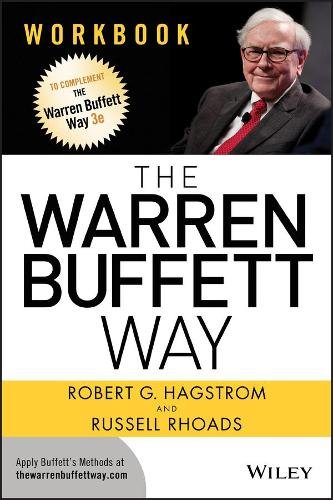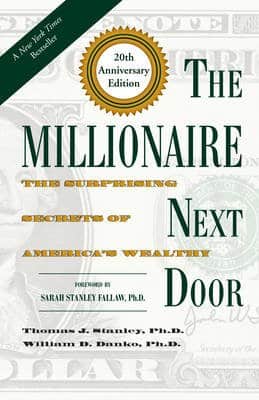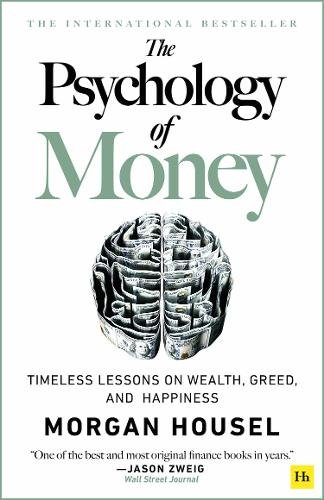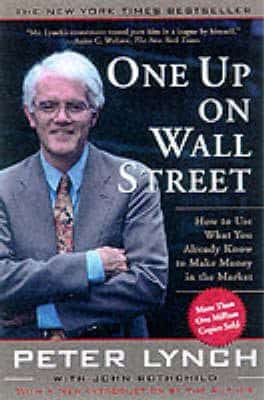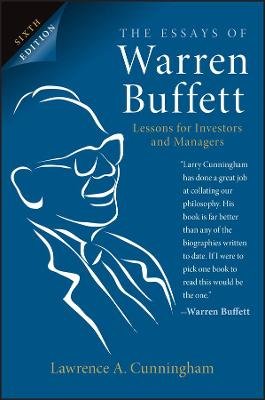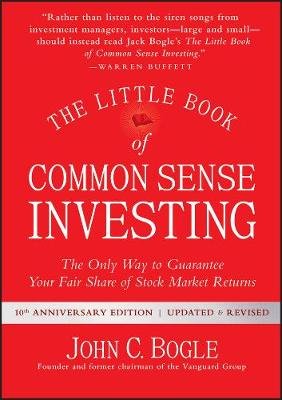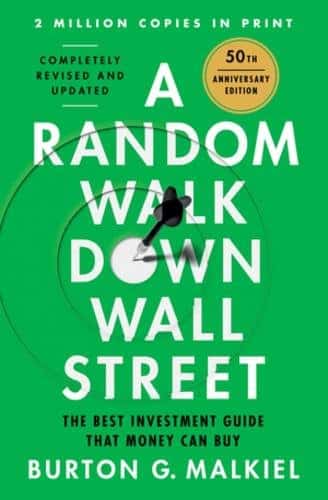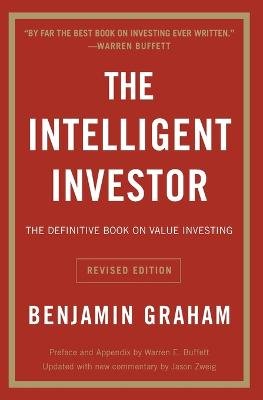
The Investors Centre’s top 10 hand chosen & must read books on investing
We have other interesting pages available, want to find the Best Investment Apps? Or Want to find out the Best Forex Trading Platforms?
The world of investing is a fascinating and complex one. It’s a realm where fortunes are made and lost, where the future is uncertain and the risks are high. It’s a world that has inspired countless books, each offering a unique perspective on how to succeed in this arena. In this post, we will explore the top 10 books on the subject of investing that have left an indelible mark on the financial world.
Investing Book Number 10: The Four Pillars of Investing by William J. Bernstein
The Four Pillars of Investing by William J. Bernstein is an insightful guide to building a sound investment strategy. The author, a neurologist turned financial advisor, provides a comprehensive framework for constructing a diversified portfolio that can weather market turbulence and achieve long-term financial goals. The book is organized around four pillars of investing: asset allocation, market efficiency, risk management, and behavioral pitfalls. Bernstein argues that successful investing requires a deep understanding of each of these pillars and how they interact with each other.
Key points:
The first pillar of investing, asset allocation, is the most important factor in determining investment returns. Bernstein argues that investors should diversify their portfolios across different asset classes, such as stocks, bonds, and real estate, and should rebalance periodically to maintain their desired allocation. He also provides guidance on how to choose the right mix of assets based on an investor’s age, risk tolerance, and financial goals.
Why I recommend this book:
I highly recommend The Four Pillars of Investing to anyone interested in building a sound investment strategy. Bernstein’s writing is clear and concise, and he does an excellent job of explaining complex financial concepts in an accessible way. The book is also well-researched and evidence-based, drawing on the latest academic research in finance and economics.
Why I don’t recommend this book:
While I highly recommend The Four Pillars of Investing overall, there are a few potential drawbacks to consider. First, the book can be somewhat technical and may not be suitable for readers with no background in finance or economics. Second, some readers may find Bernstein’s approach to investing overly conservative, as he emphasizes the importance of low-cost index funds and warns against trying to beat the market. Finally, the book may not be suitable for readers looking for a quick-fix solution to their investment problems, as Bernstein emphasizes the importance of a long-term, disciplined approach to investing.
Conclusion:
In conclusion, The Four Pillars of Investing is an excellent guide to building a sound investment strategy. Bernstein’s emphasis on asset allocation, market efficiency, risk management, and behavioral pitfalls provides a comprehensive framework for investors looking to achieve long-term financial success. While the book may not be suitable for all readers, I highly recommend it to anyone interested in improving their investment skills and building a more secure financial future.
Investing Book Number 9: Common Stocks and Uncommon Profits by Philip A. Fisher
Common Stocks and Uncommon Profits by Philip A. Fisher is a classic investment book that has remained relevant since it was first published in 1958. The book presents the author’s investment philosophy, which focuses on long-term investments in high-quality growth companies. Fisher’s approach is grounded in a deep understanding of the companies he invests in, and he emphasizes the importance of conducting thorough research and analysis to identify promising investment opportunities.
Key points:
Fisher’s investment philosophy is based on several key principles, including the importance of investing in companies with a strong growth potential and a competitive advantage. He emphasizes the need for investors to conduct extensive research and analysis of companies before investing, and to focus on long-term investments rather than short-term gains. Fisher also stresses the importance of investing in management teams that are competent and have a strong track record of success.
Why I recommend this book:
Common Stocks and Uncommon Profits is a must-read for anyone interested in investing in the stock market. Fisher’s investment philosophy is grounded in sound principles, and his approach to investing emphasizes the importance of thorough research and analysis. The book provides practical advice on how to identify high-quality growth companies and manage risk, and it is full of real-world examples that illustrate Fisher’s investment approach.
Why I don’t recommend this book:
While there is much to admire in Fisher’s investment philosophy, the book is somewhat dated and does not account for some of the changes that have taken place in the stock market since it was first published. For example, Fisher’s emphasis on investing in growth companies may not be as relevant today, as many investors have shifted their focus to value investing. Additionally, the book is written in a somewhat technical style, which may make it difficult for some readers to follow.
Conclusion:
Common Stocks and Uncommon Profits is a timeless classic that provides valuable insights into the world of investing. While some aspects of the book may be dated, Fisher’s investment philosophy is grounded in sound principles that are still relevant today. The book is a must-read for anyone interested in investing in the stock market, and it provides practical advice on how to identify high-quality growth companies and manage risk. Overall, I highly recommend this book to anyone who wants to improve their investment skills and succeed in the stock market.
Investing Book Number 8: The Warren Buffett Way by Robert G. Hagstrom
Robert G. Hagstrom’s “The Warren Buffett Way” is an insightful and practical book that delves into the strategies and principles behind Warren Buffett’s investing success. The book provides an in-depth analysis of the investment philosophy of one of the world’s most successful investors and offers practical insights into how investors can apply these principles to their own investing strategies. Hagstrom provides a detailed examination of Buffett’s investment principles and strategies and offers an insightful analysis of his success.
Key points:
Buffett’s investment approach: The book provides a detailed analysis of Warren Buffett’s investment approach, which is centered on investing in companies with strong competitive advantages and sustainable growth potential. Hagstrom explains how Buffett evaluates companies, their management teams, and their competitive positions to make informed investment decisions.
Why I recommend this book:
“The Warren Buffett Way” is an excellent book for anyone looking to gain insights into Warren Buffett’s investment philosophy and strategies. Hagstrom does an excellent job of breaking down Buffett’s approach to investing and provides practical insights that can be applied to an individual’s investing strategy. The book is well-researched, and the analysis is thorough and easy to understand.
Why I don’t recommend this book:
While “The Warren Buffett Way” is an excellent book, it may not be suitable for everyone. The book is focused on Buffett’s investment approach, which may not be suitable for all investors. The book also focuses heavily on Buffett’s investment in Berkshire Hathaway, which may not be relevant for investors looking to invest in other companies.
Conclusion:
Overall, “The Warren Buffett Way” is an excellent book for anyone looking to gain insights into Warren Buffett’s investment philosophy and strategies. Hagstrom does an excellent job of breaking down Buffett’s approach to investing, and his analysis is thorough and easy to understand.
Investing Book Number 7: The Millionaire Next Door by Thomas J. Stanley and William D. Danko
The Millionaire Next Door by Thomas J. Stanley and William D. Danko is a classic personal finance book that challenges the common stereotypes of millionaires. Through research, the authors found that most millionaires are not the flashy, luxury car-driving, mansion-living individuals that we often see in the media. Instead, they are frugal, hardworking, and practical individuals who live well below their means. The book provides insight into how anyone, regardless of their income level, can achieve financial independence and become a millionaire.
Key points:
One of the main points of The Millionaire Next Door is that most millionaires are self-made. They did not inherit their wealth but instead built it through hard work, discipline, and smart financial decisions. The authors found that the majority of millionaires are business owners or self-employed professionals who live modestly, save consistently, and invest wisely.
Why I recommend this book:
The Millionaire Next Door is a must-read for anyone who wants to gain a better understanding of personal finance and achieve financial independence. The book challenges the common stereotypes of millionaires and provides a realistic and attainable path to building wealth. The authors provide concrete examples and research to support their claims, making the book both informative and engaging.
Why I don’t recommend this book:
While I highly recommend The Millionaire Next Door, there are some potential downsides to the book. One criticism is that the authors focus primarily on the quantitative aspects of building wealth and may neglect the emotional and psychological factors that play a role in financial decision-making. Additionally, some readers may find the book repetitive or overly simplistic in its approach.
Conclusion:
In conclusion, The Millionaire Next Door is a must-read for anyone who wants to achieve financial independence and build wealth. The book challenges common stereotypes of millionaires and provides a realistic and attainable path to financial success. While there are some potential downsides to the book, the principles and insights outlined are invaluable for anyone looking to improve their financial situation.
Investing Books Number 6: The Psychology of Money by Morgan Housel
The Psychology of Money by Morgan Housel is a must-read for anyone interested in personal finance, investing, or economics. This book goes beyond the typical advice on how to save and invest money and delves into the behavioral and psychological aspects that shape our financial decisions.
Key points:
Housel explores various topics related to money, such as the importance of time, the impact of luck, and the power of compounding. He uses real-life examples to illustrate his points, such as the story of Ronald Read, a Vermont gas station attendant who left an $8 million fortune to charity after a lifetime of frugal living and wise investing. Housel also covers the concept of financial independence and how it relates to happiness, as well as the dangers of greed and fear in investing.
Why I recommend this book:
I highly recommend The Psychology of Money to anyone who wants to gain a deeper understanding of how money works and how to make better financial decisions. Housel’s writing style is engaging and accessible, and he uses a wide range of examples and anecdotes to illustrate his points. The book is also well-researched and draws on insights from psychology, history, and economics.
Why I don’t recommend this book:
There is very little to criticize about The Psychology of Money. Some readers may find the book to be too focused on the psychological aspects of money and not practical enough in terms of specific investment advice. However, this is not the main focus of the book and is not a valid criticism.
Conclusion:
The Psychology of Money is an insightful and thought-provoking book that provides a fresh perspective on the world of your own finance and investing. Whether you are a seasoned investor or just starting out, this book is packed with valuable insights and practical advice that can help you make better financial decisions.
Investing Books Number 5: One Up On Wall Street by Peter Lynch
One Up On Wall Street by Peter Lynch is a must-read book for anyone who wants to learn about investing in the stock market. This book provides valuable insights into the world of investing, which is written in a language that is easy to understand. Peter Lynch has shared his years of experience in the stock market in this book, which is based on his successful career as a fund manager at Fidelity Investments. The book covers everything from finding the right stocks to invest in to how to stay ahead of the market trends.
Key points:
One of the key points of the book is that anyone can invest in stocks, regardless of their financial background. Peter Lynch encourages readers to invest in what they know and to do their own research on companies they are interested in investing in. The book emphasizes the importance of understanding a company’s financials, such as earnings and cash flow, before investing in its stocks. Lynch suggests looking for companies with a sustainable competitive advantage and a solid management team.
Why I recommend this book:
One Up On Wall Street is a great book for novice investors who want to learn the basics of stock market investing. The book provides practical advice on how to research companies and make informed investment decisions. Peter Lynch’s writing style is engaging and humorous, making the book a pleasure to read.
Why I don’t recommend this book:
While One Up On Wall Street is an excellent resource for novice investors, it may not be suitable for more experienced investors who are looking for advanced investment strategies. The book is geared towards individual investors, and some of the advice may not be relevant for institutional investors or professional fund managers.
Conclusion:
Overall, One Up On Wall Street is an excellent book that provides valuable insights into the world of stock market investing. It is a great resource for novice investors who want to learn the basics of investing in stocks. The book’s emphasis on investing in what you know and doing thorough research on companies is a refreshing approach to investing.
Investing Books Number 4: The Essays of Warren Buffett by Warren Buffett
The Essays of Warren Buffett is a collection of Warren Buffett’s annual letters to shareholders of Berkshire Hathaway, which is one of the largest and most successful companies in the world. The book contains insights into Buffett’s investment philosophy, business principles, and personal values. The book is a must-read for anyone interested in investing, business, and leadership.
Key points:
The Essays of Warren Buffett is divided into 11 chapters, each focusing on a different topic. The first chapter introduces Buffett’s investment philosophy, which is based on investing. He explains that investing value involves buying stocks that are undervalued by the market and holding them for the long term. He emphasizes the importance of investing in companies with strong management teams, competitive advantages, and a solid financial position.
Why I recommend this book:
The Essays of Warren Buffett is an invaluable resource for anyone interested in investing, business, and leadership. The book provides insights into one of the most successful investors and business leaders in history. Buffett’s investment philosophy and business principles are clear and easy to understand, and they can be applied to a wide range of industries and situations. The book is well-written and engaging, and it provides a fascinating glimpse into the mind of one of the world’s most successful businesspeople.
Why I don’t recommend this book:
There are very few reasons not to recommend The Essays of Warren Buffett. The only potential drawback is that the book can be dense and technical at times, which may make it less accessible to readers who are not familiar with investing or business. However, even readers who are not experts in these fields will still find valuable insights in the book.
Conclusion:
In conclusion, The Essays of Buffett is a must-read for anyone interested in investing, business, or leadership. The book provides a comprehensive overview of Buffett’s investment philosophy
Number 3: The Little Book of Common Sense Investing by John C. Bogle
The Little Book of Sense Investing by John C. Bogle is a compact but powerful book that lays out the principles of passive investing. The book is written by the founder of Vanguard Group, one of the largest investment management companies in the world, and is based on Bogle’s decades of experience in the industry. The book presents a compelling case for investing in low-cost, index-based funds and provides a step-by-step guide to building a simple, diversified investment portfolio that is likely to outperform most actively managed funds over the long term.
Key points:
The book starts by debunking the myths surrounding active investing, arguing that most investors cannot consistently beat the market and that trying to do so through active management leads to high fees and taxes that erode returns. Bogle then introduces the concept of index funds, which seek to replicate the performance of a broad market index, such as the S&P 500, at a low cost. He explains how index funds have a number of advantages over active funds, including lower fees, greater tax efficiency, and more reliable returns.
Why I recommend this book:
The Little Book of Common Sense Investing is a must-read for anyone who is interested in investing. Bogle’s arguments are clear and compelling, and his advice is grounded in decades of experience in the industry. The book is written in a concise, accessible style, making it easy to understand even for those who are new to investing.
Why I don’t recommend this book:
There is very little to criticize about The Little Book of Common Sense Investing. If anything, some readers may find the book overly simplistic or repetitive. Bogle’s approach is not particularly innovative or groundbreaking, but it is effective, and his arguments are well-supported by research and data.
Conclusion:
Overall, The Little Book of Sense Investing is a must-read for anyone who wants to take control of their financial future. Bogle’s approach to investing is simple, straightforward, and effective, and his arguments are backed up by decades of experience and research. The book is accessible to everyone, regardless of their level of investing knowledge, and provides practical, actionable advice on how to build a simple, low-cost, diversified investment portfolio that is likely to outperform most actively managed funds over the long term. I highly recommend this book to anyone who is interested in investing, whether they are just starting out or are a seasoned investor looking to improve their portfolio.
Number 2: A Random Walk Down Wall Street by Burton Malkiel
A Random Walk Down Wall Street by Burton Malkiel is a classic investment book that has been updated many times since it was first published in 1973. The book covers a range of topics related to investing, including the history of the stock market, the efficient market hypothesis, and various investment strategies.
Key points:
The book’s central thesis is that investors are better off following a passive investment strategy, such as investing in index funds, rather than trying to pick individual stocks or actively manage their portfolios. Malkiel argues that most investors, including professionals, are unable to consistently beat the market, and that trying to do so only leads to higher fees and taxes, as well as increased risk.
Why I recommend this book:
A Random Walk Down Wall Street is a must-read for anyone interested in investing. Malkiel’s arguments are well-supported by empirical evidence, and his writing is accessible and engaging. The book provides a thorough overview of the stock market and its history, as well as practical advice on how to invest.
Why I don’t recommend this book:
While I believe that A Random Walk Down Wall Street is an excellent book, it may not be suitable for all readers. The book is heavily focused on US markets, and some of the advice may not be applicable to investors in other countries. Additionally, the book is geared towards long-term investors, and may not be as relevant for those looking for short-term gains.
Conclusion:
A Random Walk Down Wall Street is a classic investment book that provides a compelling argument for a passive investment strategy. Malkiel’s writing is accessible and engaging, and his arguments are well-supported by empirical evidence.
Number 1: The Intelligent Investor by Benjamin Graham
“The Intelligent Investor” by Benjamin Graham is a classic book on value investing that was first published in 1949. Graham is considered to be one of the fathers of investing and is credited with influencing some of the greatest investors of our time, including Buffett. The book provides a comprehensive guide to investing, which involves identifying undervalued stocks and investing in them for the long term. The Intelligent Investor emphasizes the importance of investing in a company’s intrinsic value, rather than simply following the market’s trends.
Key points:
The book is divided into four main parts. The first part covers the principles of investing, including the difference between investing and speculation. Graham argues that investing should be based on sound principles, such as a company’s earnings and assets, rather than speculation or hype.
Why I recommend this book:
It is a must-read for anyone interested in value investing or investing in general. Graham’s insights are timeless and provide a solid foundation for building a successful investment strategy. The book is well-written and easy to understand, even for those with little to no experience in investing.
Why I don’t recommend this book:
While this is an excellent book, it may not be suitable for everyone. The book by Benjamin Graham is relatively dense and may be challenging for those without a background in finance or investing. Additionally, some of the examples used in the book may be outdated, as the book was first published over 70 years ago.
Conclusion:
Overall, the book is a timeless classic that provides valuable insights into the world of investing. Graham’s principles are still relevant today and provide a solid foundation for building a successful investment strategy. While the book may be challenging for some readers, it is well worth the effort. Anyone looking to improve their investment skills should read this book. Whether you are a seasoned investor or just starting, “The Intelligent Investor” is a must-read.

